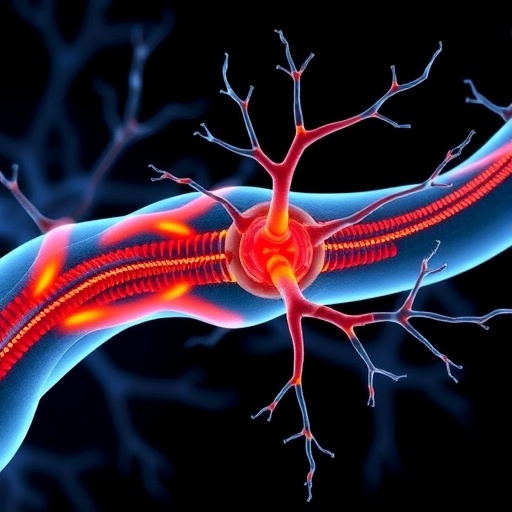In the intricate tapestry of human development, early life experiences stand as critical determinants shaping not only psychological well-being but also behavioral outcomes extending well into adulthood. Recent research emanating from Japan provides robust evidence highlighting the profound linkage between adverse childhood experiences (ACEs) and subsequent substance use behaviors within the population, underscoring a troubling yet scientifically compelling narrative. This study, published in the International Journal of Mental Health and Addiction in 2025, meticulously unravels how early trauma translates into heightened vulnerabilities, offering crucial insights into prevention and intervention strategies tailored to culturally specific contexts.
Adverse childhood experiences encompass a spectrum of potentially traumatic events occurring before the age of eighteen, including various forms of abuse, neglect, and household dysfunction. The cumulative burden of these experiences has been widely documented in Western contexts; however, Yamamoto, Kimura, Kurotori, and their colleagues have ventured into the relatively understudied terrain of East Asian populations, where social dynamics and stigma differ considerably. The authors employed a comprehensive population-based survey in Japan to quantify the prevalence of ACEs and their correlation with substance use behaviors, ranging from alcohol consumption to illicit drug engagement.
Methodologically, the study utilized validated self-report measures for both ACE assessment and substance use frequency, bolstered by demographic controls to isolate the effect of childhood adversities from confounding variables. The analytical framework was grounded in advanced statistical modeling, enabling the disaggregation of ACE types and their distinct impacts on various substance use outcomes. This granular approach revealed that certain adversities, particularly emotional and physical abuse, showed stronger predictive relationships with substance use initiation and escalation.
One of the salient findings of this investigation involves the dose-response relationship observed between the number of ACEs reported and the probability of engaging in substance use later in life. This incremental risk phenomenon aligns with a biological plausibility model, wherein chronic early stress disrupts neuroendocrine functions, thereby altering stress response systems and reward mechanisms in the brain. Consequently, individuals with multiple ACEs develop heightened susceptibility to seeking external agents such as alcohol and drugs to mitigate affective dysregulation or cognitive distress.
Furthermore, cultural nuances intrinsic to Japanese society emerge as critical modifiers in the ACE-substance use nexus. The researchers elucidate how intergenerational communication patterns, societal expectations of resilience, and stigma surrounding mental health issues affect both the reporting of ACEs and the manifestation of associated substance use behaviors. These contextual elements render simplistic extrapolations from Western-centric data insufficient, highlighting the imperative for culturally informed research paradigms when addressing public health concerns.
Neurobiological correlates provide a compelling backdrop to these findings. Research in neurodevelopment reveals that adversities during pivotal growth phases impede the maturation of corticolimbic circuits responsible for emotion regulation and executive control. This neurodevelopmental disruption potentially underpins the compulsive and maladaptive substance use behaviors documented in individuals carrying ACE histories. The Japanese study integrates these theoretical constructs with empirical data, offering a multidimensional perspective on how early trauma embeds itself in both brain architecture and behavioral trajectories.
Importantly, the implications of this research extend to clinical practice and public health policy. Identification of ACEs as critical risk factors for substance use advocates for early screening in healthcare settings, enabling timely interventions that could forestall the progression to substance dependence. Moreover, community-based prevention programs could be recalibrated to address the early environmental factors contributing to long-term health risks, thereby reducing the societal burden of addiction.
The authors also cautiously discuss the limitations inherent to self-reported data, such as recall bias and underreporting driven by stigma or perceived social desirability. These concerns suggest the need for complementary methodologies, including longitudinal cohort studies and biological markers, to further refine our understanding of the ACEs-substance use connection. Nonetheless, the convergence of findings across methodologies bolsters the credibility of the observed associations.
Replicating these results in diverse subgroups within Japan, such as rural versus urban populations and across socioeconomic strata, would enrich the applicability of targeted interventions. The differential distribution of ACEs and substance use patterns implies that a one-size-fits-all approach to prevention may fall short. Instead, stratified public health initiatives that consider genetic predispositions, environmental stressors, and cultural idiosyncrasies hold promise for mitigating the adverse outcomes linked to early trauma.
The study’s longitudinal perspective provides a temporal map illustrating how ACE-related vulnerabilities evolve developmentally before culminating in substance use. It emphasizes critical windows where protective factors, including positive caregiver relationships and community support systems, might disrupt these adverse trajectories. By embracing a life-course approach, future research and policy formulations can address not only the consequences but also the antecedents of addiction.
From a neuropsychological vantage point, the interplay between emotional regulation deficits and reward system sensitivities surfaces as a key explanatory mechanism. Functional imaging studies corroborate alterations in the prefrontal cortex and amygdala circuits in individuals reporting both high ACE counts and substance misuse. These findings spotlight potential neurobiological targets for pharmacological and behavioral interventions tailored to trauma-exposed populations.
Beyond individual risk, the societal implications of widespread ACE exposure encompass increased healthcare costs, productivity losses, and intergenerational transmission of trauma and addiction. The study advocates for integrative approaches combining mental health services with addiction treatment, recognizing the inseparability of these domains in effectively addressing the sequelae of childhood adversity.
Technological advancements such as machine learning offer innovative pathways to identify high-risk individuals by analyzing complex ACE and behavioral datasets. Predictive modeling can optimize resource allocation in healthcare systems by flagging vulnerable populations who may benefit most from early preventive measures. The incorporation of culturally specific variables enhances the precision and relevance of such models in the Japanese context.
In conclusion, this groundbreaking Japanese population study enriches the burgeoning field of trauma-informed research by elucidating the compelling association between adverse childhood experiences and substance use. It lays a foundation for culturally nuanced public health strategies and underscores the necessity of early intervention to mitigate the pervasive impact of childhood trauma on addiction trajectories. As the global community grapples with substance use challenges, such insights are invaluable in crafting holistic responses that consider the deep-seated origins of these behaviors.
Subject of Research: Adverse Childhood Experiences and their Association with Substance Use in a Japanese Population
Article Title: Association of Adverse Childhood Experiences and Substance Use: Evidence from a Japanese Population Study
Article References:
Yamamoto, T., Kimura, T., Kurotori, I. et al. Association of Adverse Childhood Experiences and Substance Use: Evidence from a Japanese Population Study. Int J Ment Health Addiction, (2025). https://doi.org/10.1007/s11469-025-01572-5
Image Credits: AI Generated
Tags: adverse childhood experiences and substance usecultural context of childhood traumaearly trauma and behavioral outcomesEast Asian studies on childhood experienceshousehold dysfunction and addictionimpact of childhood neglect on adulthoodJapan ACEs researchmental health implications of early life traumapopulation-based survey on ACEsprevention strategies for substance usepsychological well-being and substance abusesubstance use behaviors in adults





